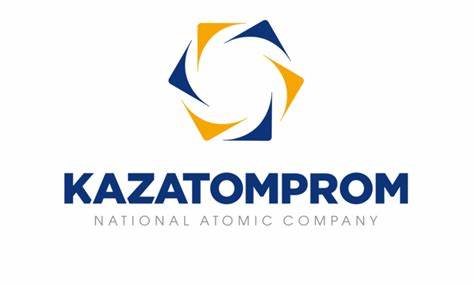Kazatomprom is the biggest uranium miner in the world. It has warned that it is likely to fall short of its production targets over the next two years. This announcement added another risk to uranium supply as demand for the nuclear fuel rebounds.
The uranium miner is a London-listed company. It is controlled by Kazakhstan’s government via its sovereign wealth fund. The company said on Friday that shortages of sulfuric acid and construction delays at newly developed deposits are creating production challenges that could persist into 2025. Kazakhstan will outline the likely impact on output in a trading update by Feb. 1, it said.
This setback adds to a list of supply challenges that have helped to catapult spot uranium prices to 15-year highs. Last year, the coup in Niger disrupting shipments to European reactors. Key miner Canada’s Cameco Corporation lowered its production targets due to challenges at its operations in Canada. Many of Cameco’s mines were mothballed as prices plunged in the wake of the Fukushima disaster. Now operators are racing to bring the shuttered Cameco mines back online as uranium demand rebounds.
The global decarbonization drive and the disruption in energy markets in the wake of Russia’s invasion of Ukraine have helped spark a renaissance in the nuclear industry. National governments are increasingly willing to sign off on new nuclear projects despite cost over-runs and delays that continue to plague the nuclear sector.
Shares in uranium miners jumped across the globe this week after the U.S. said it is soliciting bids to boost domestic production of a nuclear fuel known as high-assay low-enriched uranium (HALEU). The U.S. said that this was an effort to bolster national energy security. The U.K. also said this week that it will build another large-scale nuclear power plant as the nation maps out its biggest expansion of atomic energy in 70 years. This is beyond current projects by Electricite de France SA. The U.K. also intends to invest up to US$383 million dollars to boost production of HALEU. This nuclear fuel is currently only commercially produced in Russia.
The war in Ukraine has triggered efforts to ease reliance on Russia’s nuclear enrichment facilities. These facilities are fed by Kazakhstan’s mines. The growing interdependence between the two countries has caused turmoil at Kazatomprom. The sale of a stake in a massive new mine to Russia in 2022 prompted an exodus of the senior managers.
The deal for part of the Budenovskoye mine which is projected to become the world’s biggest source of the radioactive metal, will add to Russia’s nuclear power monopoly, Rosatom. It went through at the end of 2022, people familiar with the matter told Bloomberg last year. The deal was pushed by Kazakhstan’s sovereign wealth fund. It has been reported that action was against the wishes of the leadership at Kazatomprom.
Kazatomprom said on Friday that it’s committed to fulfilling its contractual obligations to existing customers throughout 2024. The uranium miner’s production plans for 2025 are subject to “considerable supply chain risks,” it added.
